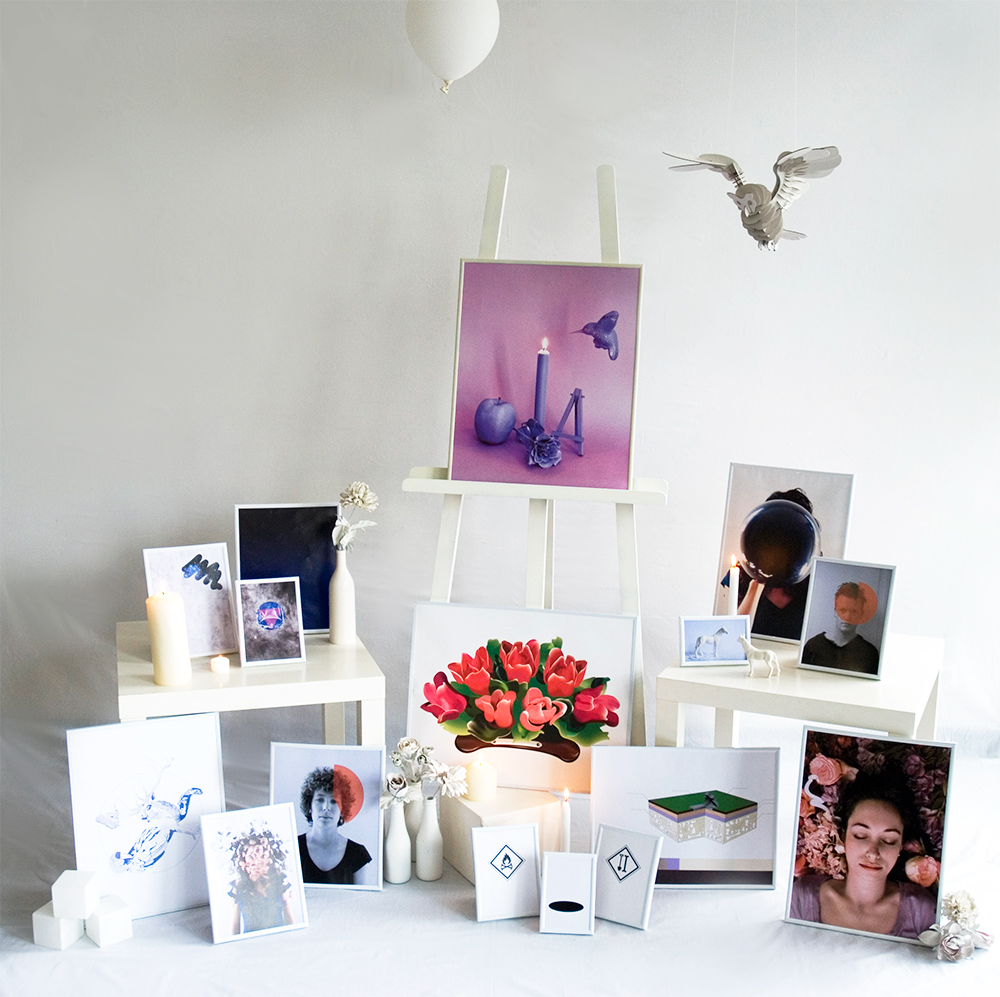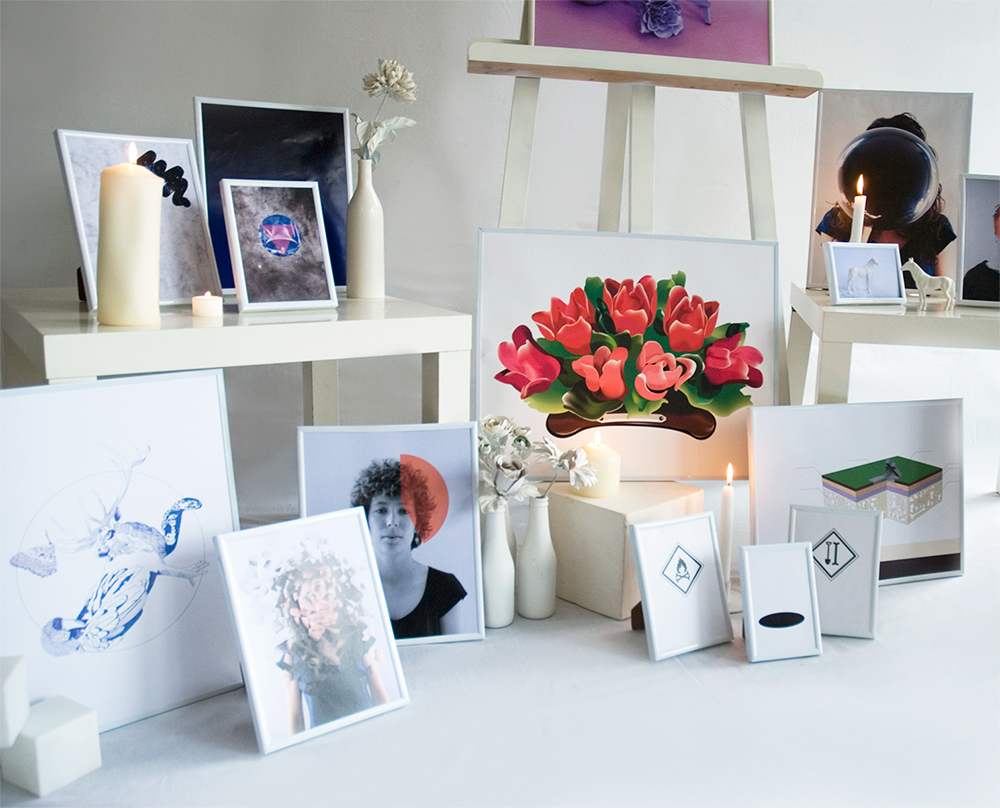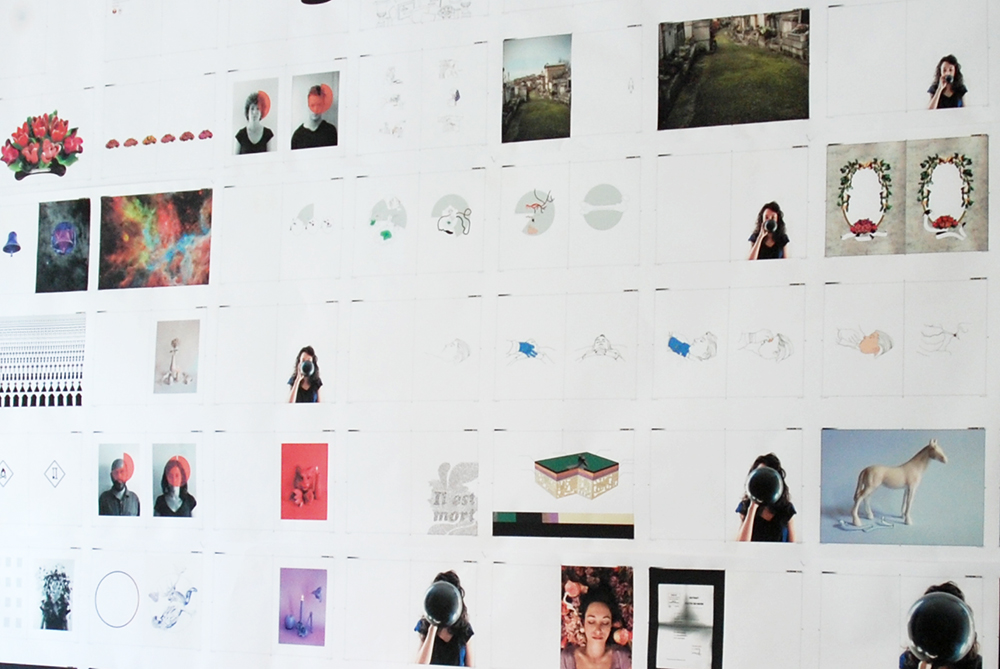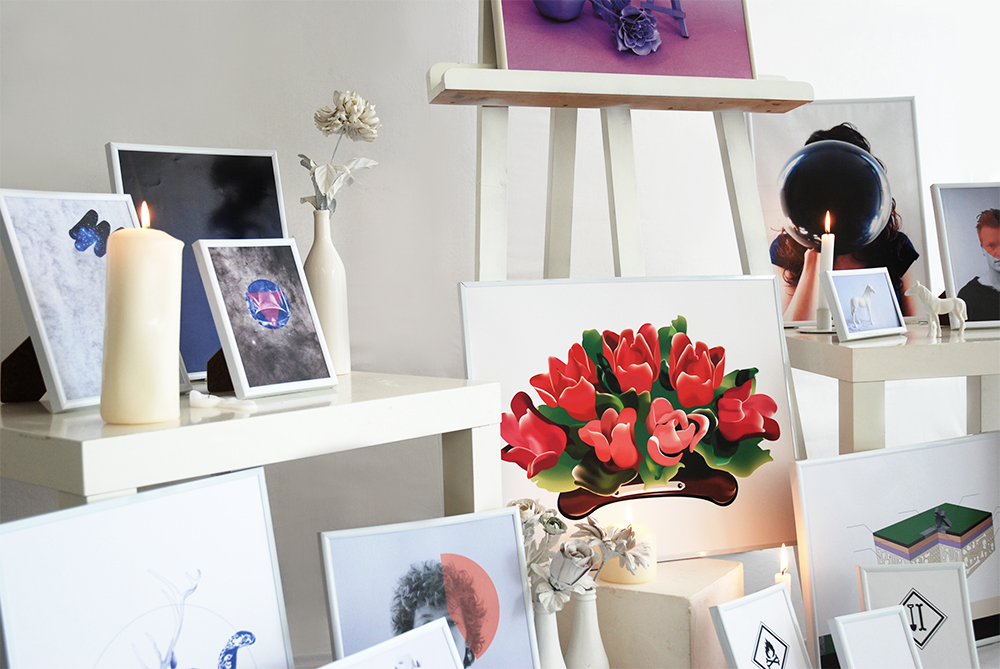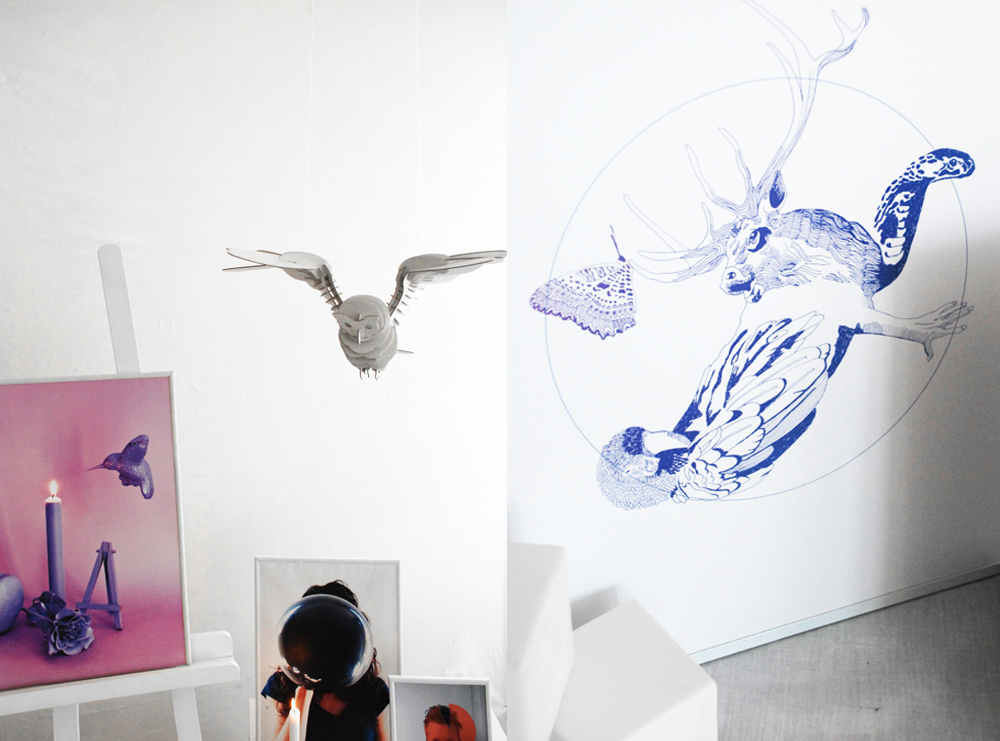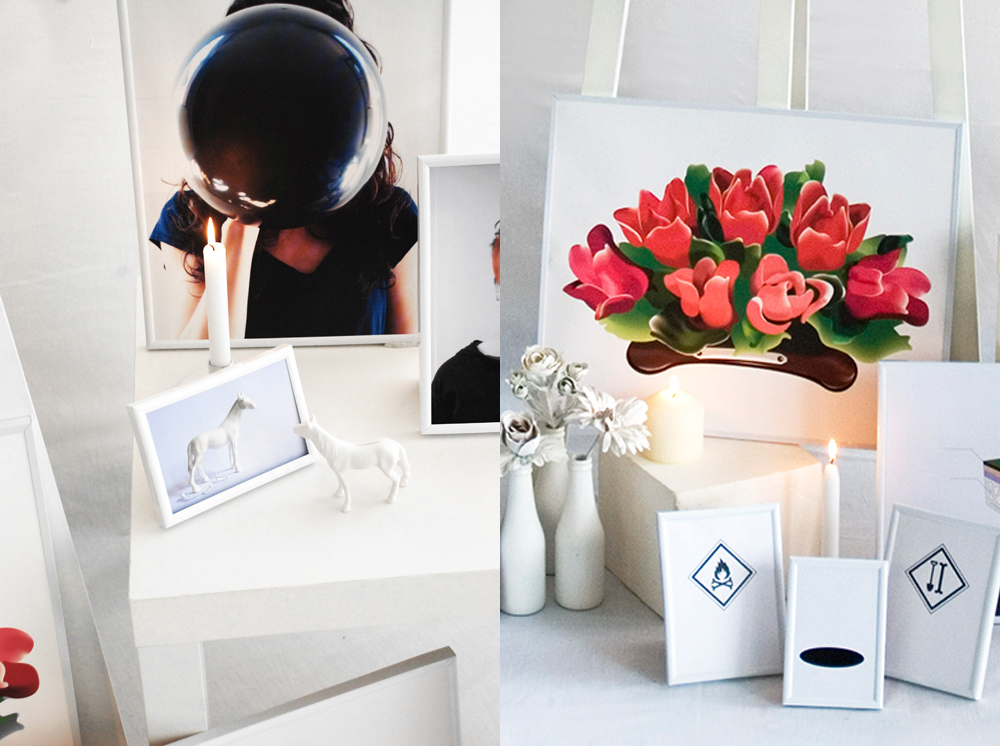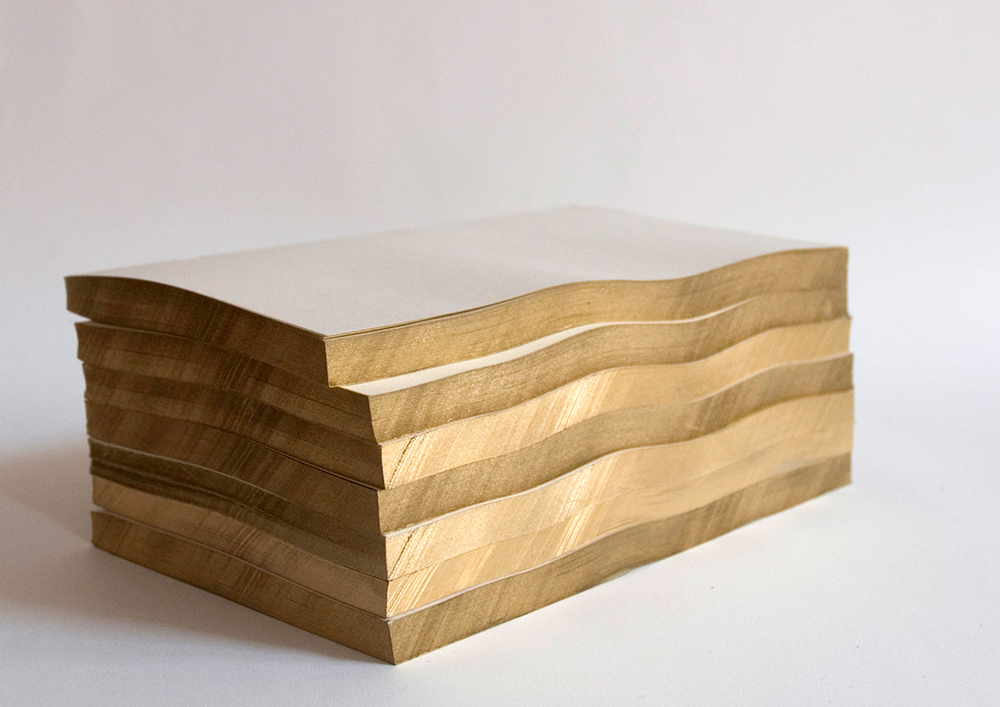
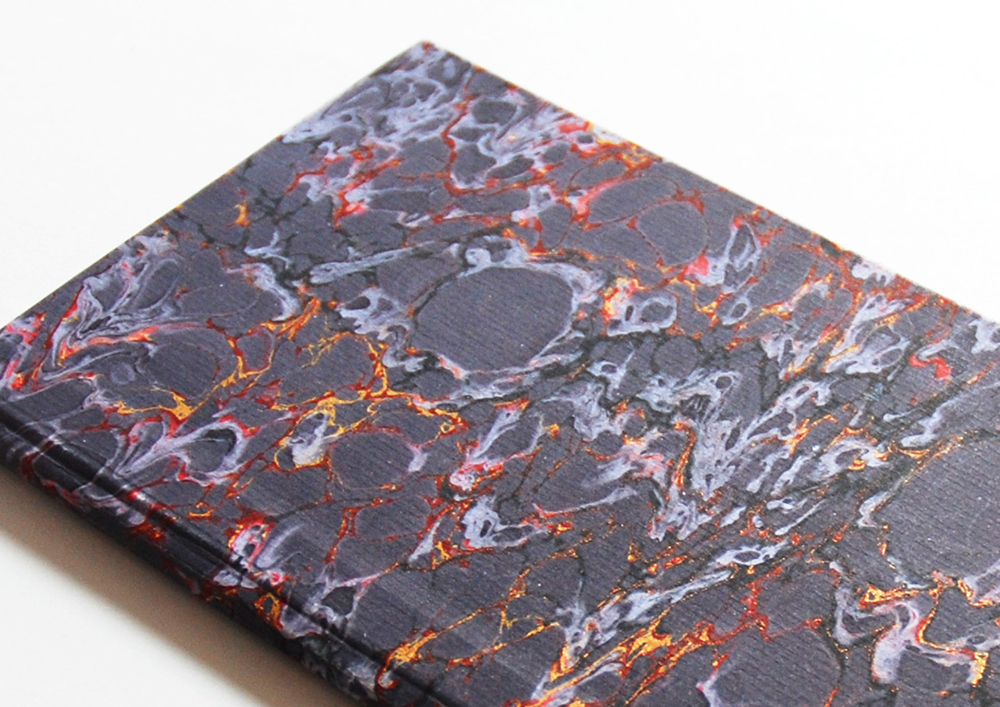
Seeing Death Again, Installation. Design of all material, photographs, illustrations and set design.
Extract of my Essay
• French
« La laïcisation de la société, le vieillissement de la population, l’individualisme et le culte de la performance contribuent, à des degrés divers, au refoulement social de la mortalité. » — Céline Lafontaine, La Société Post-mortelle : La mort, l’individu et le lien social à l’ère des technosciences.
Vaincre la mort, tel est le programme non seulement de la métaphysique, de la science, en cherchant sans cesse à repousser le vieillissement, mais aussi et surtout de la religion, en construisant son propre rapport à la mort, et plus généralement de l’ensemble de la culture humaine. Mourir est, au sens propre, impensable. Mais comment faire comme si de rien n’était ? Personne n’ignore qu’il va mourir, s’y préparer ne serait, alors, qu’une question de bon sens. Et pour ce, il faudrait d’abord que nous acceptions d’y penser. Freud, dans Deuil et mélancolie, propose de se préparer à mourir pour mieux vivre. Il ne s’agit pas de vaincre la mort, mais d’en prendre conscience et de l’accepter. « L’homme libre ne pense a rien moins qu’à la mort et sa sagesse est une méditation non de la mort mais de la vie. »
Tandis que les rites distancient le vivant du défunt, la représentation de la mort qui peut aussi d’une certaine manière, être considérée comme une pratique rituelle, distancie de l’idée de la mort en général et donc de sa propre mort. Si l’on en croit cette définition des rites qui auraient « pour fonction de représenter, du latin “ repraesentare ” rendre présent, c’est-à-dire de faire connaître, d’offrir à la vue et à l’esprit, ou encore de rendre perceptible, sensible par une figure, un signe », la représentation visuelle ou graphique qui utilise « une figure, un signe », est au même titre que n’importe quel autre rite, indispensable au travail de deuil.
• English
« Society’s secularization, the ageing of the population, individualism and the performance worship, contribute, in various extents, to the social repression of mortality » — Céline Lafontaine, La Société Post-mortelle : La mort, l’individu et le lien social à l’ère des technosciences.
Cemeteries, and particularly graves, have used the same materials and the same shapes for centuries, it is probably because there is the idea that they will succeed in crossing time better and so in keeping the dead man’s memory as long as possible. However we can notice an extreme standardization which also reveals a hygienic preocupation, a will not to show death, too often considered as obscene, etymologically: « Off the scene ».
The absence of membership in some social or religious community makes « The mourning process » (Freudian phrase) more difficult and strengthens feelings of incomprehension and madness. These effects reveal that a place for bereaved people is missing. Besides, children who have not integrated the separations that life and death involve, risk throughout their lives, being in trouble faced with the common break up of life.
As Freud explains, « Another person’s death sends us back to the idea of our own death and to the fear which it provokes. » So, mourning a person is mourning oneself, becoming aware of our own mortality and accepting it.
Rites are to « represent, from the Latin word « repraesentare » make present , that is to say make something known, offer to the view and mind, or also make perceptible, by a figure, a sign ». Rites stage death, by representing it. This staging allows people to see death and to put it at a distance. It is this ritual practice which I tried to find again with graphic design.

